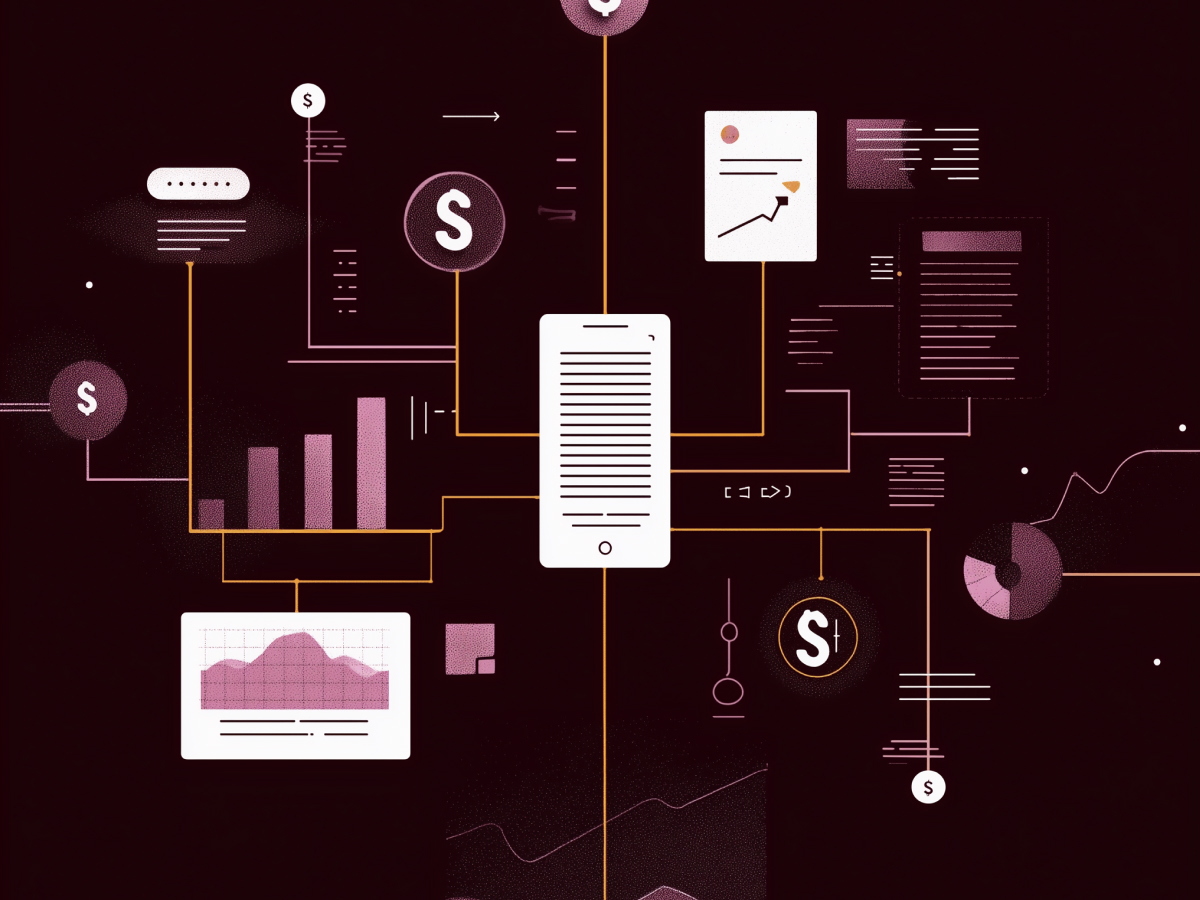AI is transforming call center operations
Artificial Intelligence is no longer theoretical in customer service, it’s working, it’s scaling, and it’s changing everything. What used to be a reactive function buried in the cost center is now transforming into a strategic point of value creation. AI is doing what humans can’t: handling thousands of simultaneous inquiries, instantly analyzing sentiment, and continuously learning from each interaction.
This is about amplification. Modern AI call centers respond faster and smarter. They minimize wait times, personalize conversations, and support agents with real-time customer data. These platforms can handle the volume while providing insights that drive better decisions across product, marketing, and support. It moves operations from guesswork to precision.
For any business leader reading this, CX has become a defining edge. Top-performing brands are shifting from measuring call center success in terms of cost reduction to measuring lifetime customer value. If your call center isn’t already running on an AI backbone, you’re behind.
Enhanced IVR systems through AI integration
Most people hate interactive voice response (IVR). Static menus with poor logic frustrate users, compel them to press “0” repeatedly, and waste time. They’ve become a textbook example of legacy tech that overstayed its welcome.
That’s changed. AI-driven IVRs now replace robotic menus with natural conversations. Systems with real natural language understanding, like what IBM delivered through Watson for Humana, don’t make customers wait through layered options. They respond directly to questions with 90–95% sentence recognition accuracy. Humana used to fax customers a seven-page document for basic benefits questions. Now, a customer hears: “The co-pay for optometrist visits is $75.” That’s efficient communication.
This is the level of precision businesses should demand. Customers expect clarity, speed, and relevance. Those using this kind of system achieve more than operational savings, they strengthen brand perception and drive more loyal users. For C-suite leaders, replacing legacy IVRs with AI-powered systems should be top priority. It’s not only about modernizing IT, that’s the easy part. It’s about aligning tech with how real people actually communicate.
The pandemic as a catalyst for AI adoption in call centers
The pandemic disrupted everything. Customer support systems were hit hard, ticket volumes surged, workforces went remote, and service expectations didn’t drop. They increased. Businesses that adapted fast are still winning. The common factor? AI.
AI redefined scalability and resilience. In 2020, companies weren’t experimenting with AI. They deployed it at scale. According to Magnus Geverts, VP of Product Marketing at Calabrio, it was “the year of reinvention.” Contact centers became digital ecosystems overnight. Shawna Wolverton, Chief Product Officer at Benchling, made it clear that rising ticket volumes forced organizations to accelerate automation, and conversational AI became the tool of choice.
Healthcare providers had massive demand for timely updates, appointment scheduling, and vaccine logistics. AI systems didn’t need extra training hours or long on-boarding, they were deployed to manage real-world problems immediately. These systems automated repetitive processes, flagged emerging trends, and revealed patterns buried deep in customer data.
If you’re leading CX or digital operations now, think beyond crisis response. AI should be a permanent part of your operational structure, not just emergency infrastructure. The businesses that made those fast AI investments are now operating with fewer inefficiencies and clearer insight into customer expectations.
Conversational AI enables scalable and personalized customer engagement
Conversational AI has proven itself. It’s practical, scalable, and revenue-enabling. Whether it’s messaging platforms, voice systems, or in-app chat, AI can now manage customer conversations in real time, with enough context to make each one feel intentional.
Rob LoCascio, CEO of LivePerson, said it best, this wasn’t just a pandemic workaround. Brands without traditional customer service infrastructure were able to launch AI-powered support and start scaling instantly. And it worked. These systems aren’t stretching to catch up with human performance. They’re reducing wait times, handling thousands of interactions per hour, and delivering faster service across languages and time zones.
And it doesn’t stop at support. AI is now personalized enough to drive conversion. It can recommend products based on customer history, close transactions inside messaging apps, and even shift the experience dynamically based on tone and sentiment. Executives who still see automation as a pure cost-saving play are missing the bigger picture: this is a new revenue channel.
The 2024 Forbes research report already showed that 27% of customers think AI-powered self-service is just as effective as a live agent. That number will rise. Customers get used to high-functioning systems fast. For companies, the message is clear, invest in platforms that learn and adapt. Use your agent workforce for strategic, complex cases. Your AI should handle everything else.
Predictive behavioral routing (PBR) elevates agent-customer matches
AI has moved beyond basic automation, it’s now influencing how human interactions are assigned and managed. Predictive Behavioral Routing (PBR) is a standout example. Instead of randomly assigning incoming calls to the next available agent, PBR uses data to match customers with agents who naturally align better with their communication preferences and behavioral patterns.
This isn’t theory, it’s applied behavioral science backed by machine learning. PBR originated at Mattersight Corporation in 2014 and gained traction after being acquired by NICE Nexidia. It evolved quickly. Modern PBR systems now integrate with CRMs, real-time sentiment analysis, and skill-based routing engines. AI analyzes prior interactions, personality traits, tone, and context to make faster, smarter decisions about who should interact with whom.
This is more than a polite match, it improves resolution time, reduces call escalations, and boosts customer satisfaction. When a person with low tolerance for wait time or high emotional sensitivity is matched with an agent prepared to manage that situation effectively, the result is better for both sides.
Executives serious about customer experience should treat PBR as a key investment area. It takes guesswork out of your customer service flow and replaces it with data-backed optimization. When done right, it reduces churn, improves net promoter scores, and gets results that conventional routing systems can’t deliver.
Enhancing employee experience through AI-driven tools
Customer satisfaction doesn’t scale unless the employee experience improves too. If your agents are stuck juggling repetitive tasks with limited data and no support tools, the system breaks down, especially under pressure. AI changes that. It helps agents do better work in less time with more clarity.
Start with the basics. AI can fetch real-time data during a customer call, surface product recommendations, summarize previous tickets, and even alert agents to stress indicators in the caller’s voice. It also supports agents after the call, automating wrap-up, suggesting next steps, or delivering training modules based on performance trends. The result is less burnout, more skill development, and better performance across the board.
Magnus Geverts from Calabrio pointed out that AI-powered self-service isn’t just customer-facing, internal self-service tools are just as critical for agents. These tools reduce dependency on overburdened supervisors and encourage faster decision-making. Agents become more autonomous, which improves morale and strengthens their ability to deliver consistent service.
Barry Cooper, President of NICE CX, added that AI’s impact is strategic: it frees people from low-value tasks and enables focus on the human aspects of customer experience. For decision-makers, this isn’t a soft benefit, it’s structural. When your workforce experiences fewer mental blocks and less stress, productivity rises. That shifts the conversation from managing resources to maximizing human potential.
Redefining the role of customer experience professionals
As AI gets stronger, the role of the customer experience (CX) professional is shifting. It’s no longer just about handling customer complaints or improving scripts, it’s about managing the systems that now drive most of the interaction. This means CX leaders are transitioning into strategic operators of AI-informed ecosystems.
Barry Cooper, President of NICE CX, stated that going forward, CX professionals will focus more on overseeing AI performance, making sure human-machine collaboration remains smooth, and taking ownership of complex, relationship-driven tasks. These responsibilities require a blend of emotional intelligence, deep domain knowledge, and operational oversight.
The strategic advantage here is significant. AI can recognize sentiment, analyze tone, and surface insights, but it doesn’t know intent or nuance unless it’s trained and monitored by people who understand human complexity. That’s the job of the next-generation CX leader.
For C-suite decision-makers, the message is clear: reframe CX staffing models around strategic value, not just tactical response. Train for systems thinking, elevate continuous learning, and treat CX roles as cross-functional anchors, not back-end support. These leaders will manage feedback loops between human trust and machine efficiency. Get this right, and you’ll build long-term loyalty at scale.
Maintaining a balance: the critical role of human agents
AI is powerful. It’s fast, scalable, and consistent. But it’s not enough on its own. When things get emotional, complicated, or unpredictable, people still want to talk to other people. The tech should amplify human capability, not replace it entirely.
The best results come from hybrid environments. Use AI to handle routine inquiries, gather context, suggest responses, and flag potential issues. When a situation calls for judgment, empathy, or open-ended troubleshooting, it should be handed off to a skilled human agent who can adapt on the fly. This isn’t just about quality control, it’s about knowing when human nuance matters more than algorithmic logic.
Executives should view the human layer as a premium investment, essential for handling high-impact moments where brand loyalty is built or broken. Make sure your tech stack supports live transitions, contextual awareness, and clean escalation paths. AI should know when to pull back, not just when to jump in.
The goal isn’t full automation. The goal is optimal response. Build your service model around that, and you won’t just scale, you’ll scale with precision.
Evolving call centers into hyper-personalized, predictive systems
Call centers are no longer isolated support functions, they’re evolving fast into AI-powered platforms for proactive, personalized engagement. The technology is moving from scripted responses to full situational awareness. This includes real-time sentiment analysis, predictive behavior insights, and generative AI capable of suggesting context-specific actions before the customer even asks.
This is not a future goal, it’s operational today. AI systems are now dynamic enough to adjust in real-time based on user behavior, interaction history, and communication tone. They assist agents by identifying the most relevant next step, tailoring responses by channel, and spotting intent across voice and digital touchpoints. Predictive analytics reshapes how teams surface cross-sell opportunities, identify churn risk, or solve recurring problems before they cascade.
For executives, this signals a deeper shift. AI gives you control over the full customer experience lifecycle, not just support. Contact centers can now function as intelligence hubs, providing feedback loops to product, marketing, logistics, and sales. You’re no longer just answering questions, you’re creating value across the entire business based on live customer data.
Don’t wait for AI to become more mature. It’s already delivering measurable precision and speed. What matters now is integration, pulling these capabilities into a cohesive system that connects across departments. Companies that get this right won’t just see better service metrics; they’ll redefine what direct engagement feels like for their customers.
Concluding thoughts
AI isn’t coming for call centers, it’s already here, reshaping how businesses communicate, operate, and scale. What used to be a reactive support channel is now a central node of intelligence, powered by data, driven by automation, and fueled by human insight.
Executives shouldn’t view AI as a bolt-on enhancement. It’s infrastructure. It increases margins, improves speed, reduces friction, and strengthens customer and employee relationships across every touchpoint. The organizations moving fastest are treating AI as a strategic asset, not a cost-saving tool.
This shift is structural, not cyclical. AI will keep getting smarter, faster, and more embedded into the decision layers that define business performance. The call center is no longer just a place to solve tickets, it’s where loyalty is won, data is captured in real-time, and experiences are shaped at scale.
If you’re thinking about the next competitive edge, start where your customers already are, talking, typing, and expecting more. Let AI do the heavy lifting so your people can focus on building what matters.





